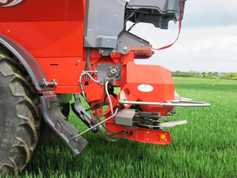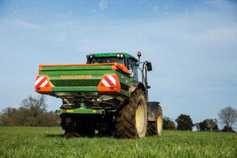Grassland management:
The continued mixed weather is starting to have an impact, particularly for farmers on heavy land. See page 41 for top tips for grazing in difficult conditions. We are now moving into August and the focus should be on building grass covers over the next month. While having 14 days grazing ahead of stock was adequate for July, the target over the next few weeks should be to increase days ahead to 25-30. As silage aftermath comes back into rotation it will help to boost covers, but along with this a strong application of fertiliser will be required. Farmers stocked at 1.5-2LU/ha will normally apply about 20-30 units of nitrogen/acre to push on grass growth. Naturally, drier farms can apply fertiliser later and still get a good return in terms of kgDM/unit N. Like in spring, recently reseeded swards and fields with good fertility will give the best return in terms of response to N in autumn. In the coming weeks, pre-grazing sward heights can be increased to 8-10cm. Continue to target a post-grazing sward height of 4cm where conditions allow.
Cull cows:
Cull cow values are high at the moment, so why not try to capitalise on this. Have you planned to scan the spring herd yet? The best results from scanning are between days 35 to 85 post breeding. Scan as soon as you can and highlight the empty cows. Not highlighting empty cows until they are in the shed is a missed opportunity. Once you have scanned and highlighted those for culling, it is then time to start to consider your options. In many cases, cows are in very good condition this year. If the cow is in good condition, is milky and rearing a good calf, there may not be any point in early weaning as she can still deliver in terms of calf weight up to weaning. Where the cow is not very milky and yield is falling off, then early weaning may be the best option, particularly on farms with very high stocking rates. Early weaning of early spring-calved cows will allow you to utilise grass and gain conditions prior to sale. Where cows are well fleshed, they may be suitable for direct slaughter. Before deciding on the factory route or the live market, do your sums. The key is to accurately estimate cow weight and killout percentage.
Castration:
While some farmers will leave calves entire to finish as bulls, for others castration is a key part of the system. Where castration is to be carried out on-farm without an anaesthetic, it needs to be done before the animal is six months old. If you are planning on castrating bulls in the coming weeks, the first step should be to ensure they have received a clostridial vaccine, particularly where banding will take place. Use a clostridial vaccine that will cover tetanus. The primary course and booster should be given four to six weeks apart. If using a burdizzo, it is advised to crush the spermatic cord twice, one below the other, for 10 seconds each time. Monitor bullocks after castration for swelling.






 This is a subscriber-only article
This is a subscriber-only article










SHARING OPTIONS: